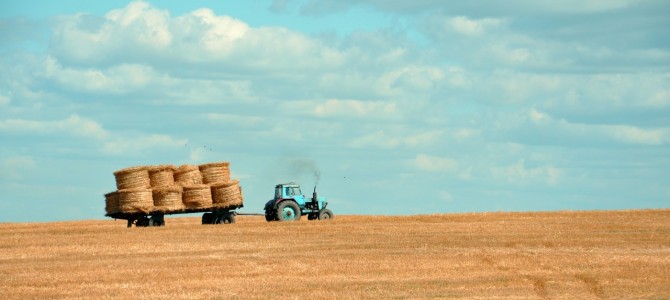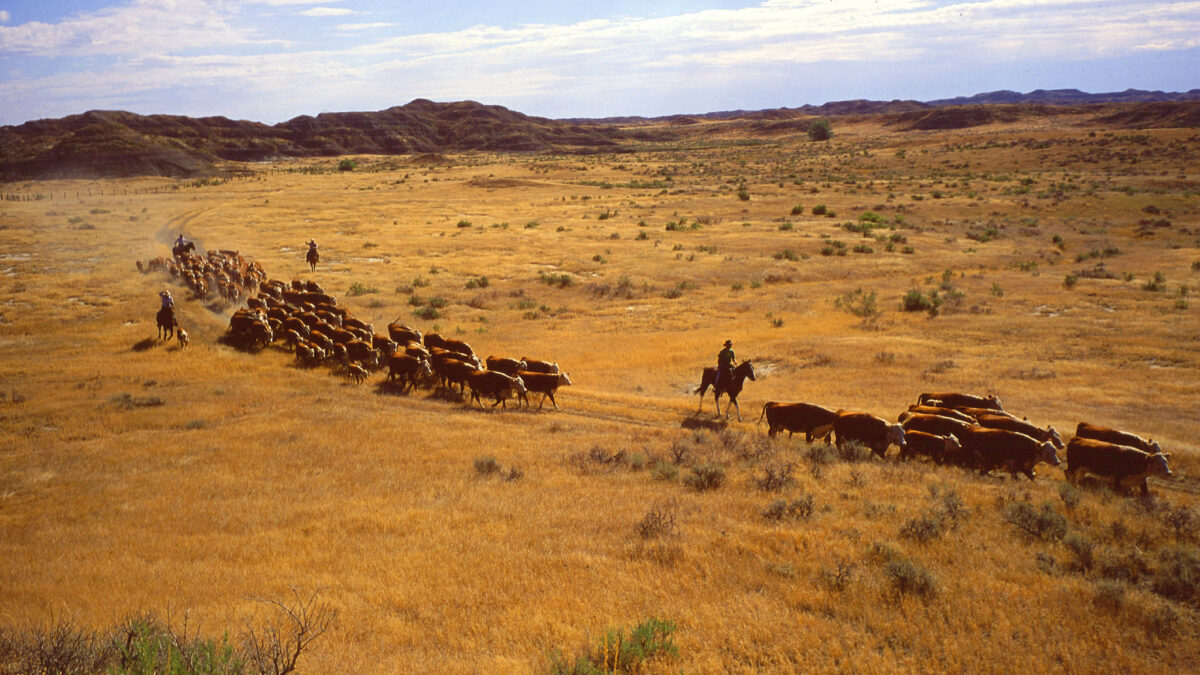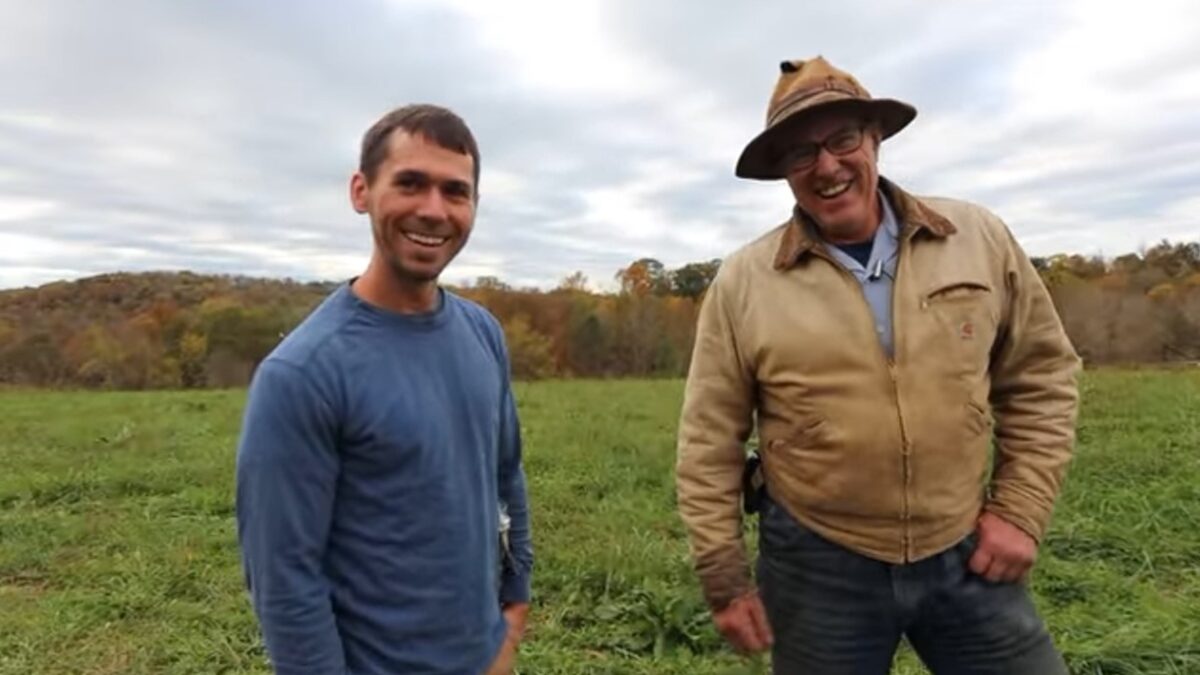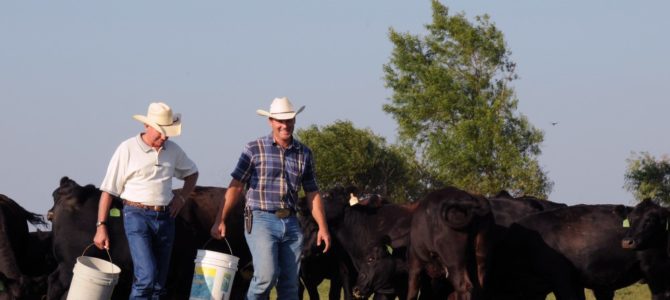
The Wall Street Journal is predicting a farm bust on the horizon, as America’s role in the global grain market shrinks, and the price for corn continues to drop. Reporters Jesse Newman and Patrick McGroarty write
The Farm Belt is hurtling toward a milestone: Soon there will be fewer than two million farms in America for the first time since pioneers moved westward after the Louisiana Purchase.
This number definitely reflects a growing decline in farming. But what the Wall Street Journal doesn’t note is that the nation’s largest farms are only growing more powerful and large. We have fewer farms, yes, but largely because we have a greater share of larger, industrialized farms.
The WSJ interviewed a specific type of farmer for this article: the commodity crop farmer. Yes, they represent the greatest portion of farms in the American heartland. But many are also beginning to realize that government subsidies and cushy crop insurance premiums can’t save them forever: when their supply is abundantly overstepping demand, eventually reality is going to hit. And if this WSJ piece is any indication, reality is indeed about to strike.
How America’s Heartland Farms Are Hurting
As you read through the Wall Street Journal’s article, a general outline of the farmers interviewed falls into place: 50-plus years of age, farming more than 1,000 acres, dotted across America’s flyover country in states like Iowa and Kansas. They’re all struggling to make ends meet:
Across the heartland, a multiyear slump in prices for corn, wheat and other farm commodities brought on by a glut of grain world-wide is pushing many farmers further into debt. Some are shutting down, raising concerns that the next few years could bring the biggest wave of farm closures since the 1980s.
The U.S. share of the global grain market is less than half what it was in the 1970s. American farmers’ incomes will drop 9% in 2017, the Agriculture Department estimates, extending the steepest slide since the Great Depression into a fourth year.
Many of these farmers need a second career in order to keep their businesses afloat.
‘No one just grain farms anymore,’ said Deb Stout, whose sons Mason and Spencer farm the family’s 2,000 acres in Sterling, Kan., 120 miles east of Ransom. Spencer also works as a mechanic, and Mason is a substitute mailman. ‘Having a side job seems like the only way to make it work,’ she said.
The History Of American Agriculture’s Decline
How did we get to this point? The WSJ gives a mini history lesson midway through their article:
From the early 1800s until the Great Depression, the number of U.S. farms grew steadily as pioneers spread west of the Mississippi River. Families typically raised a mix of crops and livestock on a few hundred acres of land at most. After World War II, high-horsepower tractors and combines enabled farmers to cover more ground. Two decades ago, genetically engineered seeds helped farmers grow more.
Farms grew bigger and more specialized. Large-scale operations now account for half of U.S. agricultural production. Most farms, even some of the biggest, are still run by families. As farm sizes jumped, their numbers fell, from six million in 1945 to just over two million in 2015, nearing a threshold last seen in the mid-1800s. Total acres farmed in the U.S. have dropped 24% to 912 million acres.
This short account of the jump from subsistence-style farming to today’s industrialized farming could easily fill thousands of pages (and indeed has—from John Steinbeck’s “Grapes of Wrath” to Wendell Berry’s novels).
Today’s Farms Still Follow an ‘Industrial Paradigm’
The Industrial Revolution shaped and transformed farming in seismic ways. As I wrote for Comment Magazine last year, “farming in the new, industrialized era began to favor quantity and specialization—because new machines worked most efficiently when farmers chose to harvest large, homogenous acreages instead of the small, diversified crops of the past. Farmers sought bigger and bigger swaths of land, seeing in them the promise of greater funds in the bank.”
American farms are still stuck in this “industrial paradigm,” says sustainable farmer Joel Salatin, owner of Polyface Farms. “Just like the agrarian economy gave way to the industrial, and the industrial to the information, and now the information is giving way to the regenerative economy, agriculture is changing. Because farmers tend to be conservative, agriculture is the slowest of all economic sectors to embrace the new economy.”
When Salatin’s father bought their family-operated farm in Swoope, Virginia, the land was severely eroded, and soil health was poor. “When my dad, in the early 1960s, asked agricultural advisors to tell him how to make a living on this farm, they all encouraged him to abuse the land more aggressively,” remembers Salatin. “He eschewed that counsel and did the opposite of everything they said. Today, we are healthy and profitable. Every person must decide whose advice to follow.”
Incentivizing Farmers to Destroy Neighbors’ Businesses
The WSJ piece goes on, “For some, the slump is an opportunity. Farmers with low debts and enough scale to profit from last year’s record harvests could be in a position to rent or buy up land from struggling neighbors.” In other words, large (most likely government-subsidized) farms can use this opportunity to buy out their smaller counterparts. Sounds like a great thing for the economy long-term, doesn’t it?
One chilly afternoon in October, Mr. Scheufler steered his combine across the first field he bought. The machine’s giant claw spun through rows of golden soybeans. A hawk circled the combine’s wake, hunting for exposed field mice. He recalled farmers whose land he has taken over: Ted Hartwick ’s, the Matthews’, the Profits’, his father’s.
Yes, building a large and profitable business is usually seen as an integral part of free market economics. We don’t want to prevent successful farms from getting larger. But it’s crucial to ask a few questions here: first, are these farms growing via their own merits—or via the support of the federal government? (Often, the answer is the latter.) Is their business model truly sustainable (and therefore, “successful” long term)?
Too often, the growth of a commodity farm means taking diversity, sustainability, and community, and turning these goods into homogeneity, depreciation, and solitude. This may not be Scheufler’s story. But it is, increasingly, the story of America’s heartland. As another interviewee tells the WSJ,
There were 28 students in Mr. Scott’s graduating class at Ransom’s high school nearly four decades ago. Most were farmers’ children. This year there are nine students in the school’s senior class. ‘Farms got bigger to be more efficient, but it’s caused these towns to die a slow death,’ Mr. Scott said.
It’s not just farm towns that are ill-served by the way agriculture currently works. Land erosion, water contamination, and soil pollution are just a few of the ecological consequences of bad farming practices. “The current debacle has been coming for a long time,” says Salatin. And, he adds, “It will not end quickly. Rectifying our decades of abuse will not be easy. Healing will be disturbing.”
Farmers Aren’t Encouraged to Diversify Their Operations
Part of the problem here is that farmers, rather than diversifying their farms to protect against commodity price drops, have been encouraged (largely by subsidies, sometimes by the market) to always produce more of the same.
“Rather than studying how nature works, the informational component of the agriculture sector tends to throw out historic templates and remake life in a mechanical hubris of fatter, faster, bigger, cheaper,” says Salatin.
Many farmers who’ve expanded their enterprises have continued to grow the same exact crops on all that land. Now, writes Newman and McGroarty, “Corn and wheat output has never been higher, and never has so much grain been bunkered away.” So when the price of corn, soybeans, and wheat drops—as it is now—farmers don’t have another crop to fall back on.
In the short term, diversifying your farm operation can be more expensive, time-consuming, and physically demanding. But it also creates job security. Long-term, it protects both your farm and soil health.
When we focus on producing a few commodity crops, any country can beat us at our own game. We produce a glut of grain that global markets are no longer buying. Meanwhile, Americans living in the heartland of Iowa buy their tomatoes and peppers from South America. It seems strange, doesn’t it?
How Can Farmers Adopt to a Changing Market?
“I am concerned about the trend of making farms bigger and bigger, and more impersonal,” Maury Johnson, owner of Blue River Hybrids, told me in an email. “American consumers have more interest in how their food is grown and produced, and the impact our conventional food system has on the environment. I personally am troubled when I drive by the feedyards and confinement buildings, and have found it difficult to eat the products coming from those environments.”
Promoting a different farming model could prove salutary for farmers. But it requires a drastically different way of thinking, and many are deeply (albeit understandably) opposed to it.
Interestingly, though, a younger generation is increasingly embracing new farming trends, seeking to build smaller, diversified, and local farming operations. As Philanthropy Daily reported last week, “All around the United States, young men and women are joining the ‘new food economy’ of small farmers and food producers. Since 2006, local food marketing channels have seen substantial growth: Farmers’ markets have grown by 180%, reaching 8,200 nationwide. 7.8% of farms in the U.S. are marketing locally, and local food sales have reached $6.1 billion.”
What Might Rebuilding a Local Food Economy Look Like?
These younger farmers, however, are struggling against the orthodoxies of their elders in the agricultural community.As author and farmer Forrest Pritchard noted in an email, “it’s no accident that the youngest farmer cited in this article is 56; the U.S. average age for a farmer is 58 and rising.”
He adds, “It defies explanation that our nation’s food security receives such low priority in our culture. The aging of our American farmers reveals a crisis of neglect—a neglect of training young farmers, a neglect of overhauling our education system to promote alternatives to commodity-dependent agriculture, and a neglect of investing appropriate research and development for alternative types of agricultural models.”
Eduardo Andino’s article in Philanthropy Daily considers a promising shift in farming support, however. He profiles a farm loan business founded by Silicon Valley businessmen. These businessmen decided to leave the world of international business to go local. Their story, which directly addresses the plight of American’s grain farmers, is worth quoting at length:
… Sam and Scott are interested in helping Maine rebuild a local food infrastructure: By giving farmers loans to build grain mills, slaughter houses, distribution plants, and more.
Scott, who some years ago formed a social investing strategies division at TIAA-CREF’s investment department, says that infrastructure is key. ‘100 years ago, you would’ve had local financial institutions that understood how local farming worked,’ and who could help build up local processors and distributors. Today, however, everything has gravitated up to the level of big ads and ‘big food.’
… Based on their international experience, Scott and Sam have concluded that the best thing they can do for agriculture worldwide is to go local. Scott describes his desire to transition ‘from a very top down high level job to a very bottom up job’ as being partially motivated by seeing the work of Rockefeller impact investing in Africa. While observing their work on a sustainable agriculture program in Africa, Scott realized ‘the best thing anyone could do for agriculture all over the world, from poor peasant farmers in Bangladesh to anywhere else, is to fix American agriculture.’
To Survive, American FarmsNeed To Change
Farming in America is undergoing a series of shifts—hopefully for the better. But the challenges today’s farmers face should not be taken lightly. Salatin urges his fellow farmers to consider making some changes in the way they do business—not just for their bottom line, but for the sake of the next generation, and the long-term wellbeing of the land.
“I know change is difficult for everyone, but I think conventional farmers have to take a hard look at breaking out of the conventional farming scene,” Johnson says. “I understand there’s limitations … but the future does not look good for medium to small conventional farmers, and help will likely not be coming from the government and its farm programs.”
“The regenerative economy is now knocking on the door of agriculture, but nobody is listening,” Salatin says. “The soil does not enjoy being mechanized and industrialized. The agricultural orthodoxy has not asked how ecology works. … Now, nature is batting last. And all the cleverness in Wall Street ultimately can’t prevail against nature’s balance sheet.”









